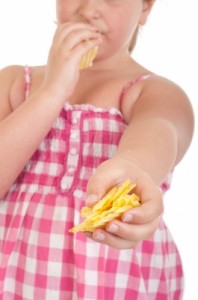 Changing a child’s diet is one of the alternative approaches that some parents consider when trying to manage their child’s ADHD. Certain foods can have significant effects on behaviour – increasing or decreasing the ADHD symptoms – so it can be useful for parents to think about whether their child is more sensitive to some things and whether eliminating the offending food could improve ADHD symptoms.
Changing a child’s diet is one of the alternative approaches that some parents consider when trying to manage their child’s ADHD. Certain foods can have significant effects on behaviour – increasing or decreasing the ADHD symptoms – so it can be useful for parents to think about whether their child is more sensitive to some things and whether eliminating the offending food could improve ADHD symptoms.
Some kids are sensitive to eggs, dairy, nuts, soy, gluten, or artificial colourings and flavourings. These foods can make them explosive and unmanageable. However, testing and eliminating for food sensitivities is not a stand-alone treatment. The approach should be part of a programme that is used in conjunction with ADHD medication and other interventions.
The best way to find out if your child has a food sensitivity is through an elimination diet, in which one or more food types is removed from their diet for a period of time in order to see if there is an improvement in ADHD symptoms.
There are three types of elimination diet:
- Oligoantigenic or “Few Foods” Diet
This method is strict, eliminating nearly all foods except a limited number that generally cause no problems. You really need to get some advice from your GP or another medical professional before you embark on this kind of diet.
- Multiple-Food Elimination Diet
Removes all the foods that most commonly cause food sensitivities, such as dairy products, wheat, corn, soy, eggs, nuts, citrus, and artificial colours and flavours. Again, ensure you get medical advice so you can make sure your child still gets all the nutrition they need.
- 3. Single-Food Elimination Diet
Removes only one food type at a time. If you believe there are one or two food types that may be affecting your child – the most common offenders are wheat and dairy – eliminate them, one at a time, for a few weeks and see what happens.
During the elimination period, observe your child’s behaviour closely. If you see some improvement, add the food or foods back, one at a time. If your child’s behaviour is better when your child is not having that food type, and worsens when he eats it, you have your answer. Sometimes you have to repeat the process a few times.
A word of advice though – while leaving out one foodstuff at a time is fairly easy to manage, before you embark on any kind of elimination diet it is best to speak to your GP, your child’s paediatrician or a nutritionist who can help you select the best diet and monitor the results. And bear in mind that not every test for food sensitivity is a resounding success. Sometimes you can go through an elimination diet, but there is no change in your child’s behaviour – and you just have to accept that diet is not a factor in their ADHD.
Photo Courtesy of www.freedigitalphotos.net

